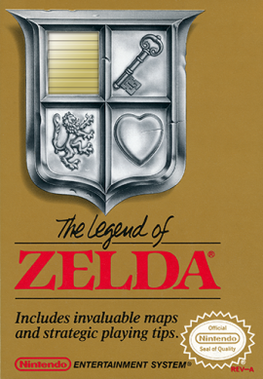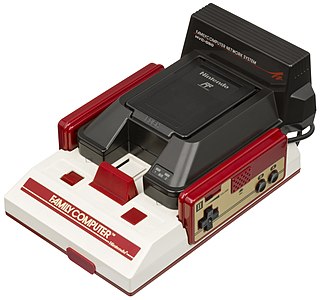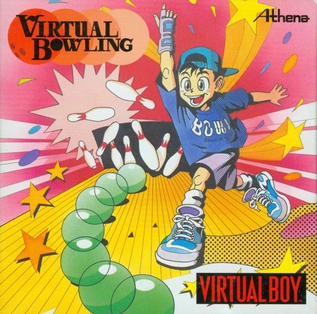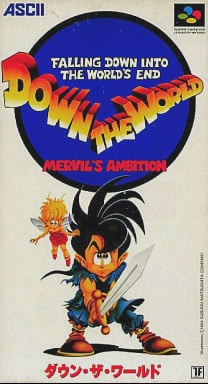
The Super Nintendo Entertainment System (SNES), commonly shortened to Super NES or Super Nintendo, is a 16-bit home video game console developed by Nintendo that was released in 1990 in Japan and South Korea, 1991 in North America, 1992 in Europe and Oceania, and 1993 in South America. In Japan, it is called the Super Famicom (SFC). In South Korea, it is called the Super Comboy and was distributed by Hyundai Electronics. The system was released in Brazil on August 30, 1993, by Playtronic. Although each version is essentially the same, several forms of regional lockout prevent cartridges for one version from being used in other versions.

The TurboGrafx-16, known as the PC Engine outside North America, is a home video game console designed by Hudson Soft and sold by NEC Home Electronics. It was the first console marketed in the fourth generation, commonly known as the 16-bit era, though the console has an 8-bit central processing unit (CPU) coupled with a 16-bit graphics processor. It was released in Japan in 1987 and in North America in 1989. In Europe, the console is known as the PC Engine, after the Japanese model was imported and distributed in the United Kingdom and France from 1988. In Japan, the system was launched as a competitor to the Famicom, but the delayed United States release meant that it ended up competing with the Sega Genesis and later the Super NES.

MSX is a standardized home computer architecture, announced by ASCII Corporation on June 16, 1983. It was initially conceived by Microsoft as a product for the Eastern sector, and jointly marketed by Kazuhiko Nishi, the director at ASCII Corporation. Microsoft and Nishi conceived the project as an attempt to create unified standards among various home computing system manufacturers of the period, in the same fashion as the VHS standard for home video tape machines. The first MSX computer sold to the public was a Mitsubishi ML-8000, released on October 21, 1983, thus marking its official release date.

The Family Computer Disk System, commonly shortened to the Famicom Disk System or just Disk System, is a peripheral for Nintendo's Family Computer home video game console, released only in Japan on February 21, 1986. It uses proprietary floppy disks called "Disk Cards" for cheaper data storage and it adds a new high-fidelity sound channel for supporting Disk System games.

The Legend of Zelda, originally released in Japan as The Hyrule Fantasy: Zelda no Densetsu, is an action-adventure game developed and published by Nintendo. The first game of The Legend of Zelda series, it is set in the fantasy land of Hyrule and centers on an elf-like boy named Link, who aims to collect the eight fragments of the Triforce of Wisdom in order to rescue Princess Zelda from the antagonist Ganon. During the course of the game, the player controls Link from a top-down perspective and navigates throughout the overworld and dungeons, collecting weapons, defeating enemies and uncovering secrets along the way.

The Satellaview is a satellite modem peripheral produced by Nintendo for the Super Famicom in 1995. Containing 1 megabyte of ROM space and an additional 512 kB of RAM, Satellaview allowed players to download games, magazines, and other media through satellite broadcasts provided by Japanese company St.GIGA. Its heavy third-party support included Squaresoft, Taito, Konami, Capcom, and Seta. To use Satellaview, players purchased a special broadcast satellite (BS) tuner directly from St.GIGA or rented one for a six-month fee, and paid monthly subscription fees to both St.GIGA and Nintendo. It attaches to the expansion port on the bottom of the Super Famicom.

Multi-memory controllers or memory management controllers (MMC) are different kinds of special chips designed by various video game developers for use in Nintendo Entertainment System (NES) cartridges. These chips extend the capabilities of the original console and make it possible to create NES games with features the original console cannot offer alone. The basic NES hardware supports only 40KB of ROM total, up to 32KB PRG and 8KB CHR, thus only a single tile and sprite table are possible. This limit was rapidly reached within the Famicom's first two years on the market and game developers began requesting a way to expand the console's capabilities.

Harvest Moon, known in Japan as Farm Story, is a farm simulation role-playing video game developed by Amccus for the Super Nintendo Entertainment System. The game first was released in Japan by Pack-In-Video in 1996, in North America by Natsume in 1997, and in Europe by Nintendo in 1998. The European version shipped with language localizations for Germany and France. It is the first game in the long-running Story of Seasons video game series, previously known as the Harvest Moon series in western territories. The game has been re-released on the Satellaview, Nintendo 3DS, Wii, Wii U and Nintendo Switch.

Nintendo Power was a video game distribution service for Super Famicom or Game Boy operated by Nintendo that ran exclusively in Japan from late 1996 until February 2007. The service allowed users to download Super Famicom or Game Boy titles onto a special flash memory cartridge for a lower price than that of a pre-written ROM cartridge.
RPG Maker, known in Japan as RPG Tsukūru, is a series of programs for the development of role-playing video games (RPGs) with story-driven elements, created by the Japanese group ASCII, succeeded by Enterbrain. The Japanese name, Tsukūru, is a pun mixing the Japanese word tsukuru (作る), means "make" or "create", with tsūru (ツール), the Japanese transcription of the English word "tool".

The Datach or Datach Joint ROM System, is an aftermarket enhancement accessory by Bandai for the Family Computer, allowing the system to play select compatible games. Released on December 29, 1992, it is packaged with one game, Dragon Ball Z: Gekitō Tenkaichi Budokai. Six other games were released for it, including one of the final games for the Famicom system in 1994. It is one of two mini systems compatible with the NES or Famicom, the other being the Aladdin Deck Enhancer.

The Family Computer Network System, also known as the Famicom Net System and Famicom Modem, is a peripheral for Nintendo's Family Computer video game console, and was released in September 1988 only in Japan. Predating the modern Internet, its proprietary dial-up information service accessed live stock trades, video game cheats, jokes, weather forecasts, betting on horse racing, and a small amount of downloadable content. The device uses a ROM card storage format, reminiscent to the HuCard for the TurboGrafx-16 and the Sega Card for the Master System.

The Nintendo Entertainment System (NES) is an 8-bit third-generation home video game console produced by Nintendo. It was first released in Japan in 1983 as the Family Computer (FC), commonly known as the Famicom. The NES, a redesigned version, was released in American test markets on October 18, 1985, before becoming widely available in North America and other countries.

Satellite Digital Audio Broadcast Co., Ltd., trading as St.GIGA, was a Japanese satellite radio company headquartered in Akasaka, Tokyo. The company was established on April 2, 1990 as a subsidiary of the television station provider WOWOW, achieving a cult following through its "Tide of Sound" nature sounds recording broadcasts and its nonstandard methodology. By 1994, St.GIGA was struggling financially due to Japan's economic stagnation affecting the demand for its ambient music, as consumers became reluctant to invest in satellite tuners.

Derby Stallion—also known in Japan by the portmanteau abbreviation DerbyStal—is a series of genre-merging horse-racing and business simulation games originally created by ASCII. The series sold 6 million copies in Japan by 1999.

Super Formation Soccer '95: della Serie A is an official licensed football video game that featured all clubs and footballers from the Italian Serie A and was released exclusively in Japan in 1995. It was licensed by Italian Football League and AIC. The game is based on the original video game Super Formation Soccer.

Virtual Bowling is a 1995 sports video game developed and published by Athena in Japan for the Virtual Boy. In the game, the player participates in a series of bowling tournaments consisting of four 10-frame matches at various alleys against computer-controlled opponents, in order to obtain a high score and progress further. Its gameplay, featuring three modes of play, is viewed from a first-person perspective.

Down the World: Mervil's Ambition is a role-playing video game (RPG) developed and published by ASCII Corporation for the Super Famicom. The plot follows the knight Gao, tasked with accompanying a hero in rescuing an ailing princess and preventing the end of all life.















